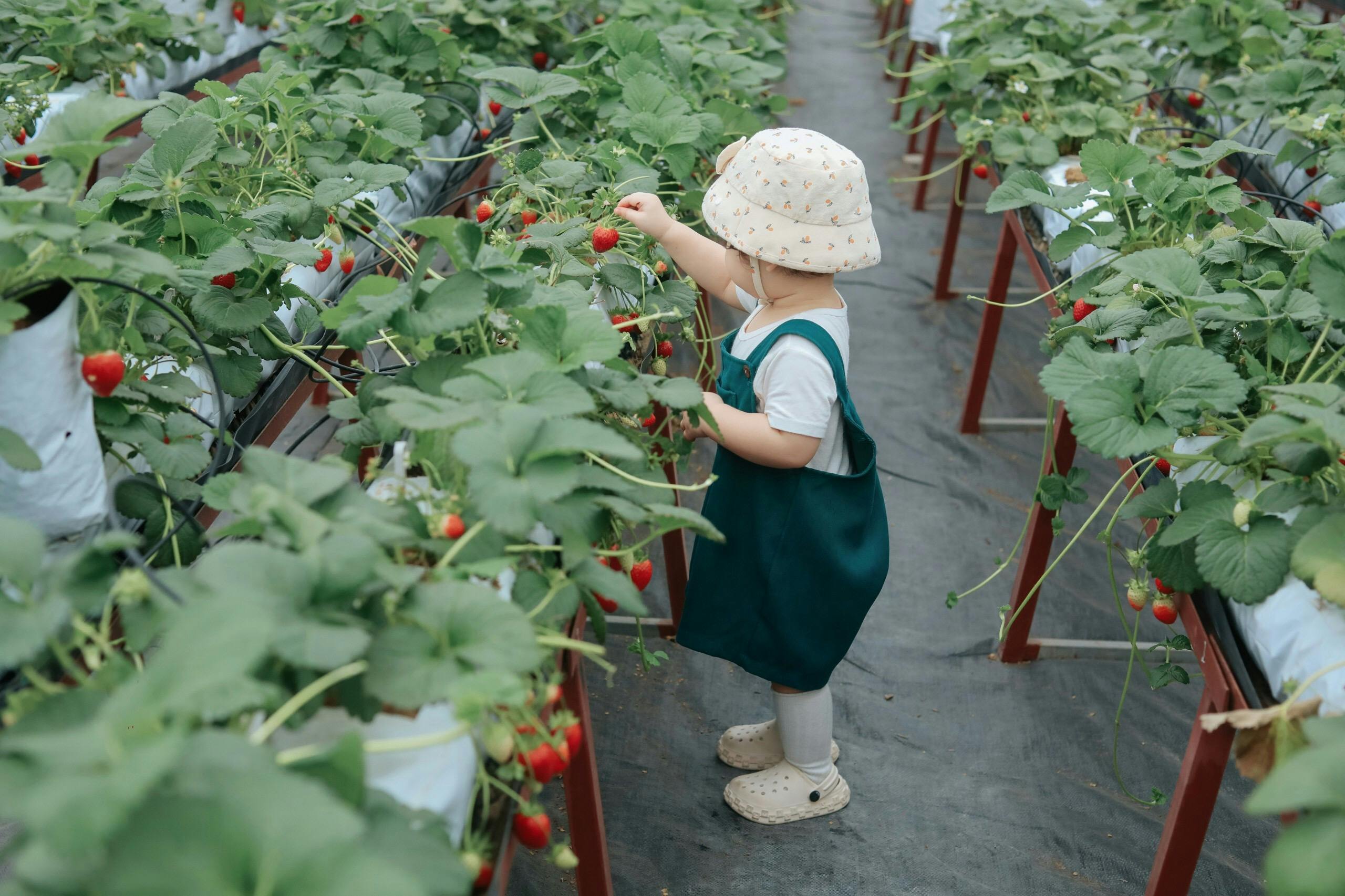If you are a gardener who has neglected your strawberry plants, the good news is that you can revive them with a bit of effort. In this guide, we will discuss some simple steps to follow to bring your strawberry plants back to life. With the right care and attention, your strawberry plants can thrive in no time.Identifying a dying strawberry plant can be done by looking for several different signs. First, the leaves may start to turn yellow or brown and wilt. Additionally, the plant may have fewer flowers and fruits than usual. Lastly, the roots may become weak and produce less energy for the plant’s growth. If any or all of these signs are present, it is likely that the strawberry plant is dying.
Common Causes of Strawberry Plant Death
Strawberry plants are highly sensitive to environmental conditions and require careful management to ensure their health and productivity. Unfortunately, poor management or unfavorable conditions can lead to the death of strawberry plants. Common causes of strawberry plant death include lack of water, nutrient deficiencies, disease, pests, and extreme temperatures.
Lack of Water
Strawberry plants require regular watering throughout the growing season, especially during dry periods. Lack of water can lead to wilting and premature fruit ripening. If left unchecked, this can eventually cause the death of the plant. It is important to check soil moisture regularly and water as needed to ensure that the plant has adequate moisture levels at all times.
Nutrient Deficiencies
Strawberry plants require a variety of nutrients in order to thrive. If any essential nutrient is missing from the soil or not supplied in adequate amounts, then it can lead to nutrient deficiencies in the plant which can weaken it and eventually cause its death. It is important to test soil regularly and use fertilizer or compost as needed to make sure that all essential nutrients are present in adequate amounts.
Disease
Strawberry plants are susceptible to a variety of fungal and bacterial diseases which can weaken or kill them if left unchecked. Common diseases include leaf spot, powdery mildew, crown rot, root rot, anthracnose and verticillium wilt. It is important to identify and treat any diseases promptly in order to prevent them from spreading or killing the plant.
Pests
Strawberry plants are also susceptible to attack from various pests such as aphids, thrips, slugs, snails and caterpillars which can weaken or kill them if left unchecked. Regular monitoring for pests is important in order to identify any infestations early on so that they can be treated promptly before they have a chance to do too much damage.
Extreme Temperatures
Strawberry plants require moderate temperatures with nighttime lows between 40-50°F (4-10°C) during their flowering period in order for flowers and fruits to develop properly. Excessively hot or cold temperatures can lead to flower bud drop or fruit damage which can weaken or even kill the plant over time if not addressed promptly. Therefore it is important to monitor temperatures closely in order ensure that they remain within acceptable ranges at all times.
Reviving a Strawberry Plant
Strawberries are a fruiting plant that can be grown in many areas. However, when their leaves start to yellow or the plants look wilted, it may be time to revive the plant. Reviving a strawberry plant is a fairly simple process and can be done by following a few steps.
The first step in reviving a strawberry plant is to check the soil moisture levels. If the soil is too dry, the plant may not be receiving enough water. Watering the soil around the strawberry plant will help bring it back to life. Make sure to water deeply, as this will help the roots absorb more water and nutrients.
Once you have watered the strawberry plants, it’s important to make sure they are getting enough light. If possible, move them into an area with more direct sunlight or use supplemental lighting such as grow lights. This will help ensure that they receive all of the necessary light for photosynthesis and healthy growth.
Finally, it’s important to fertilize regularly with an organic fertilizer that is specifically formulated for strawberries. This will provide essential nutrients and minerals that help keep your strawberries healthy and happy. Be sure to follow the directions on the package when applying fertilizer, as applying too much can damage or kill your plants.
By following these steps, you can easily revive your strawberry plants and get them back to their healthy selves in no time!
Preparing the Soil for Strawberry Plant Revival
Strawberry plants are a delightful addition to any garden and can provide a plentiful harvest of sweet, juicy fruits. However, to ensure that your strawberry plants thrive and produce a healthy yield of fruit, the soil must be properly prepared before planting. The following steps will help you create a nutrient-rich environment for your strawberry plants to flourish in.
The first step in preparing the soil is to test it for both pH and fertility levels. This can be done with a simple soil testing kit that can be purchased from any garden center or home improvement store. The ideal pH level for strawberry plants is between 6 and 6.5, so if your soil tests outside of this range, you may need to add either lime or sulfur to adjust the acidity levels accordingly. Additionally, your soil should also have a good level of fertility, as this will provide essential nutrients for the plant’s growth. If your soil is lacking in fertility, you may need to add some organic matter such as composted manure or peat moss to boost its nutrient content.
Once the pH and fertility levels have been adjusted accordingly, it’s important to loosen up the soil by digging down at least 8 inches deep and turning over the topsoil several times with a shovel or spade. This will help ensure good drainage as well as create air pockets that will help retain moisture in the root zone of the plant. Additionally, adding some organic matter such as composted manure or peat moss into the loosened soil will help further enhance its nutrient content.
Finally, it’s important to water your strawberry plants deeply before planting them in order to give them a good start in their new environment. Once planted, be sure to continue watering regularly throughout the growing season while also providing fertilizer every few weeks during fruiting time. With proper preparation and care, you should soon be enjoying sweet strawberries from your own backyard!
Applying Fertilizer for Strawberry Plant Revival
Strawberry plants can be revived with the help of fertilizer. Fertilizers are full of essential nutrients that help to nourish the plant and keep it healthy. The main nutrients that strawberry plants need for growth are nitrogen, phosphorus, and potassium. Applying fertilizer to a strawberry plant can be beneficial to its health and growth.
Fertilizers come in many forms, such as liquid, granular, or powder. When applying fertilizer to a strawberry plant, it is important to choose the right type for the specific plant. In general, liquid fertilizers should be used more frequently than granular or powder fertilizers as they are absorbed more quickly by the plant’s roots. Granular fertilizers can also be used but should be applied less frequently than liquid fertilizers.
When applying fertilizer to a strawberry plant, it is important to follow the directions on the package carefully. Over-fertilization can lead to burning of the roots or damage to the leaves and fruit of the plant. It is also important to make sure that the soil is moist before applying fertilizer as dry soil will not absorb it properly.
It is also important to note that different varieties of strawberry plants may require different amounts of fertilizer for optimal health and growth. For example, some varieties may require more nitrogen while others may need less phosphorus or potassium. To determine which type of fertilizer is best for your particular type of strawberry plant, consult with a local nursery or garden center for advice on which type will work best for your specific situation.
By following these steps and applying the right amount of fertilizer at regular intervals, you should see an improvement in your strawberry plant’s health and growth over time.

Watering Strategies for Reviving a Strawberry Plant
Strawberry plants require adequate water to thrive. In the event that a strawberry plant is suffering from lack of water, it is important to take the right steps to revive the plant. A few simple strategies for watering a strawberry plant can help bring it back to life and ensure it continues to produce delicious fruit.
The most important thing when trying to revive a dry strawberry plant is not to over-water it immediately. When a plant has gone without water, sudden exposure to too much moisture can cause shock and further damage the plant. Instead, begin by providing small amounts of water at regular intervals until the soil appears moist throughout.
The frequency of watering will depend on the type of soil and climate in which the strawberry plant is growing. In general, sandy soils will need more frequent watering than heavier soils because they cannot retain moisture as well over time. Likewise, hot climates tend to require more frequent watering than cooler climates due to evaporation rates.
In addition, consider using mulch around the base of the strawberry plant in order to help retain moisture in the soil and prevent weeds from competing with the strawberries for water and nutrients. This will also help keep the soil cool during hot summer temperatures which can further aid in reducing water loss from evaporation.
Finally, ensure that any fertilizer you use does not contain too much nitrogen as this can cause too much foliage growth at the expense of fruit production. A balanced fertilizer with equal parts nitrogen, phosphorus and potassium is ideal when reviving a dry strawberry plant and should be applied according to package instructions in order to avoid over-fertilizing which can also harm or kill your plants.
By following these simple strategies for watering your strawberry plants, you can help them recover quickly and resume producing delicious fruit for many years to come.
Pruning and Propagating Dying Plants for Recovery
Pruning is an important part of maintaining healthy plants. Pruning helps to maintain the plant’s shape, remove dead or dying branches, and promote strong growth. It can also help a dying plant make a recovery. By removing dead or damaged branches, the plant can focus its energy on the healthy parts of the plant. Pruning also stimulates new growth, providing plants with more opportunities to recover from damage caused by disease or environmental factors.
Propagation is another way to help a dying plant recover. By propagating a part of the dying plant, you can create new, healthy plants that will be less susceptible to the same problems that caused the original damage. If you are propagating from a stem cutting, make sure it is healthy and free from disease or injury before planting it in soil. The best time to propagate is during the growing season when temperatures are warmer and there is plenty of moisture in the air.
If you are propagating from an existing root system, you should start by removing any diseased or damaged roots before repotting the cutting in fresh soil. Make sure that your pot has good drainage and use a potting mix that is suitable for your particular plant species. Once planted in this new soil, water regularly and provide adequate sunlight for your newly propagated plants to grow strong and healthy again. With patience and proper care, your newly propagated plants should be able to make a full recovery!
Controlling Pests and Diseases for Reviving a Strawberry Plant
Reviving a strawberry plant is no easy task. However, if done correctly, you can ensure that your strawberry plant stays healthy and produces delicious fruits. One of the most important steps in reviving a strawberry plant is controlling pests and diseases. Pests and diseases can damage the leaves, stems, flowers, and fruits of your strawberry plants, making it difficult to produce high-quality fruit. Therefore, it is essential to take the necessary steps to prevent these pests and diseases from taking hold of your plants.
One way to control pests and diseases is by providing proper nutrition for your plants. Make sure you are providing adequate amounts of water, sunlight, and fertilizer to help keep your plants healthy. Additionally, be sure to use the appropriate insecticides or fungicides when needed as this can help reduce the spread of pests or diseases on your plants.
Another way to protect your strawberry plants from pests and diseases is by providing good air circulation around them. Pruning or thinning out the branches can help improve air circulation around the plant which will reduce humidity levels which can be beneficial for preventing fungal growth on leaves and stems. Additionally, it is important to remove any dead or damaged leaves from the plants as this will help prevent any further spread of disease-causing organisms within the area.
Finally, it is important to practice good hygiene when dealing with your strawberry plants. This means washing your hands before handling any fruit or foliage and cleaning any tools that you have used on them as well. Additionally, avoid walking through berry patches with dirty shoes as this can transfer pests or disease-causing agents from one area to another which can cause a lot of damage in short amount time.
By taking these steps you will be able to successfully revive a strawberry plant that has been affected by pests or diseases. Proper nutrition along with good hygiene practices are key factors in helping keep your strawberries healthy so make sure you take these steps before harvesting any fruit!

Conclusion
Reviving strawberry plants is not difficult, but it does require some work. To revive a strawberry plant, you need to start by removing any dead or dying foliage and then prune back the healthy foliage to allow new growth to emerge. You should then apply fertilizer and water it regularly so that it can establish a healthy root system. Once the plant has taken root, you can repot it in fresh soil and move it to its intended location. With proper care, your strawberry plant should be able to thrive once again.
Overall, with some patience and effort, reviving a strawberry plant can be an achievable goal. With this guide as your guide, you should have all the information you need to successfully revive your strawberry plant and enjoy fresh strawberries for years to come!



